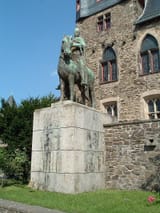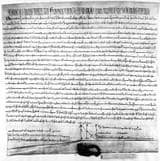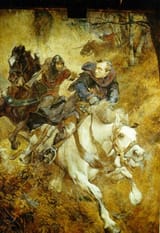Anonymous
7/26/2025, 9:33:13 PM No.17874296
I'll start with the life and eventual murder of Archbishop Engelbert I. of Cologne.
He was born as the second son of the Counts of Berg and was thus set for an ecclesiastical career. He worked early on in the Archdiocese of Cologne - but in the early years of the German Throne Dispute (1197 - 1215; a conflict between the dynasties of Staufen and Welf/Guelph over the matter of succession of the next Emperor of the HRE) he ttok the side of the Staufer and waged a little war within the Archdiocese of Cologne. For this he was actually banned by the Pope in 1206 but already pardoned in 1208. For the remainder of this conflict Engelbert remained neutral, joined briefly the Albigensian Crusade and in 1216 he became the Archbishop of Cologne (he still had to pay reparations towards the Pope for the destruction he caused earlier).
1/3
He was born as the second son of the Counts of Berg and was thus set for an ecclesiastical career. He worked early on in the Archdiocese of Cologne - but in the early years of the German Throne Dispute (1197 - 1215; a conflict between the dynasties of Staufen and Welf/Guelph over the matter of succession of the next Emperor of the HRE) he ttok the side of the Staufer and waged a little war within the Archdiocese of Cologne. For this he was actually banned by the Pope in 1206 but already pardoned in 1208. For the remainder of this conflict Engelbert remained neutral, joined briefly the Albigensian Crusade and in 1216 he became the Archbishop of Cologne (he still had to pay reparations towards the Pope for the destruction he caused earlier).
1/3



